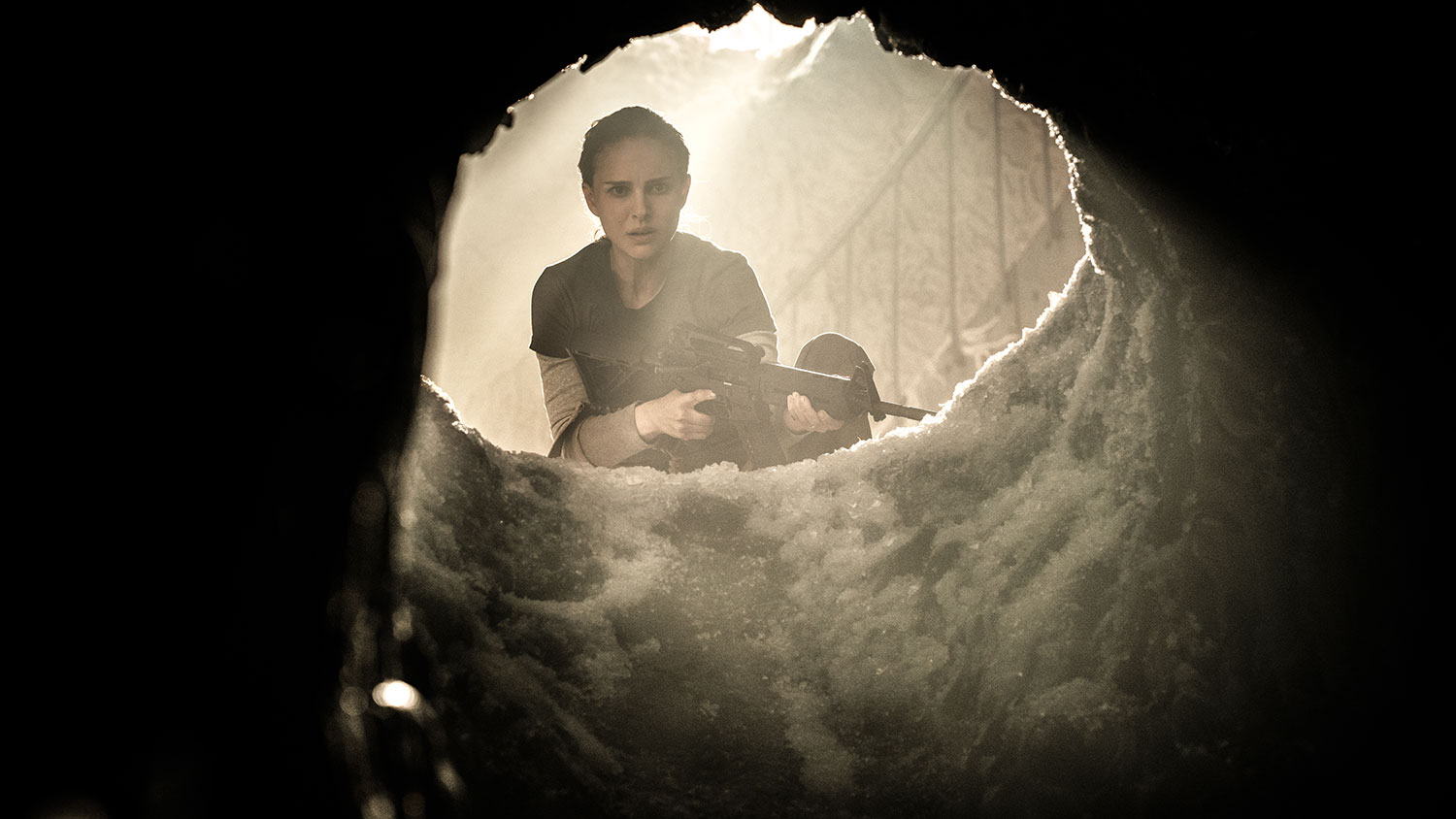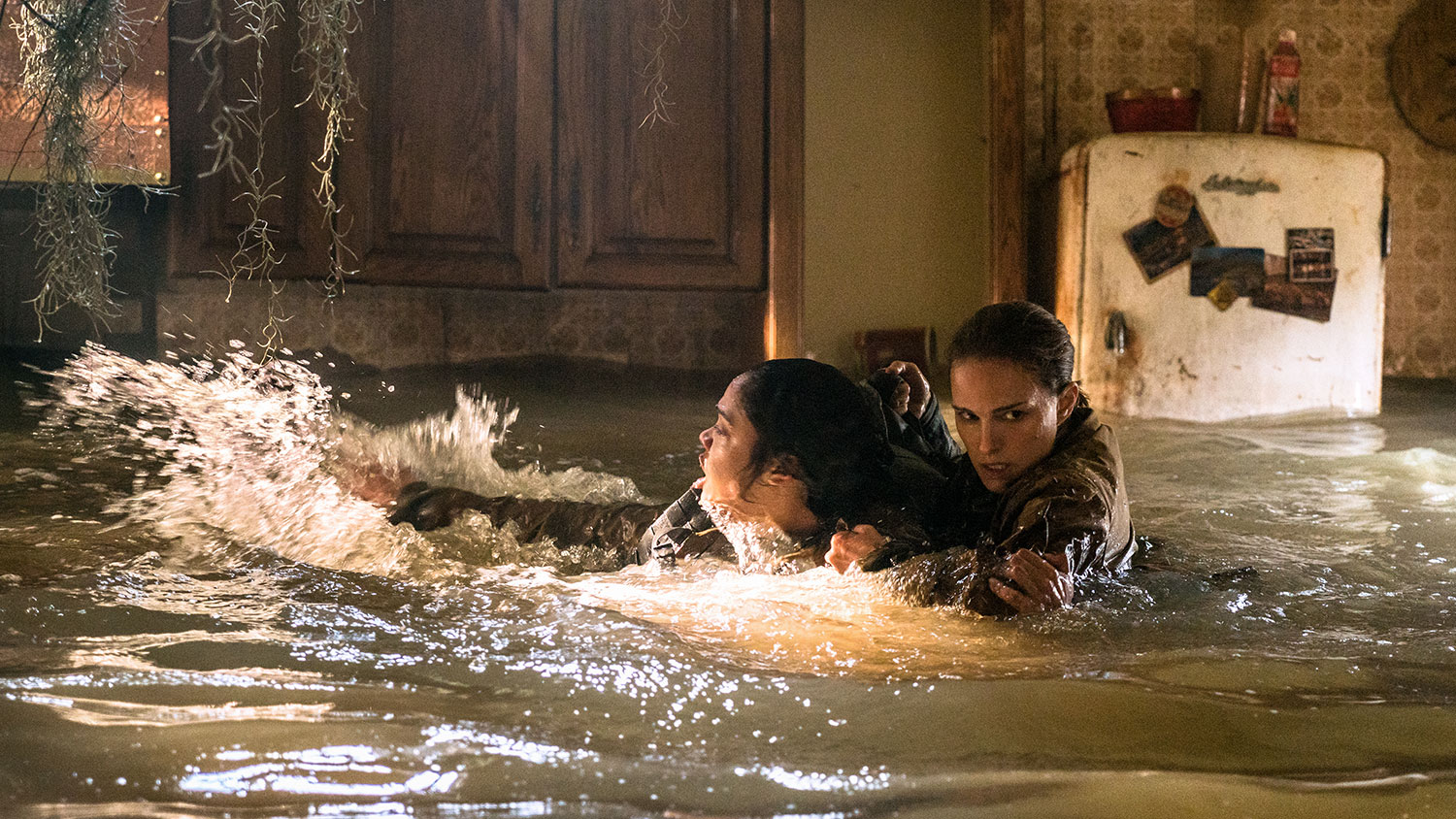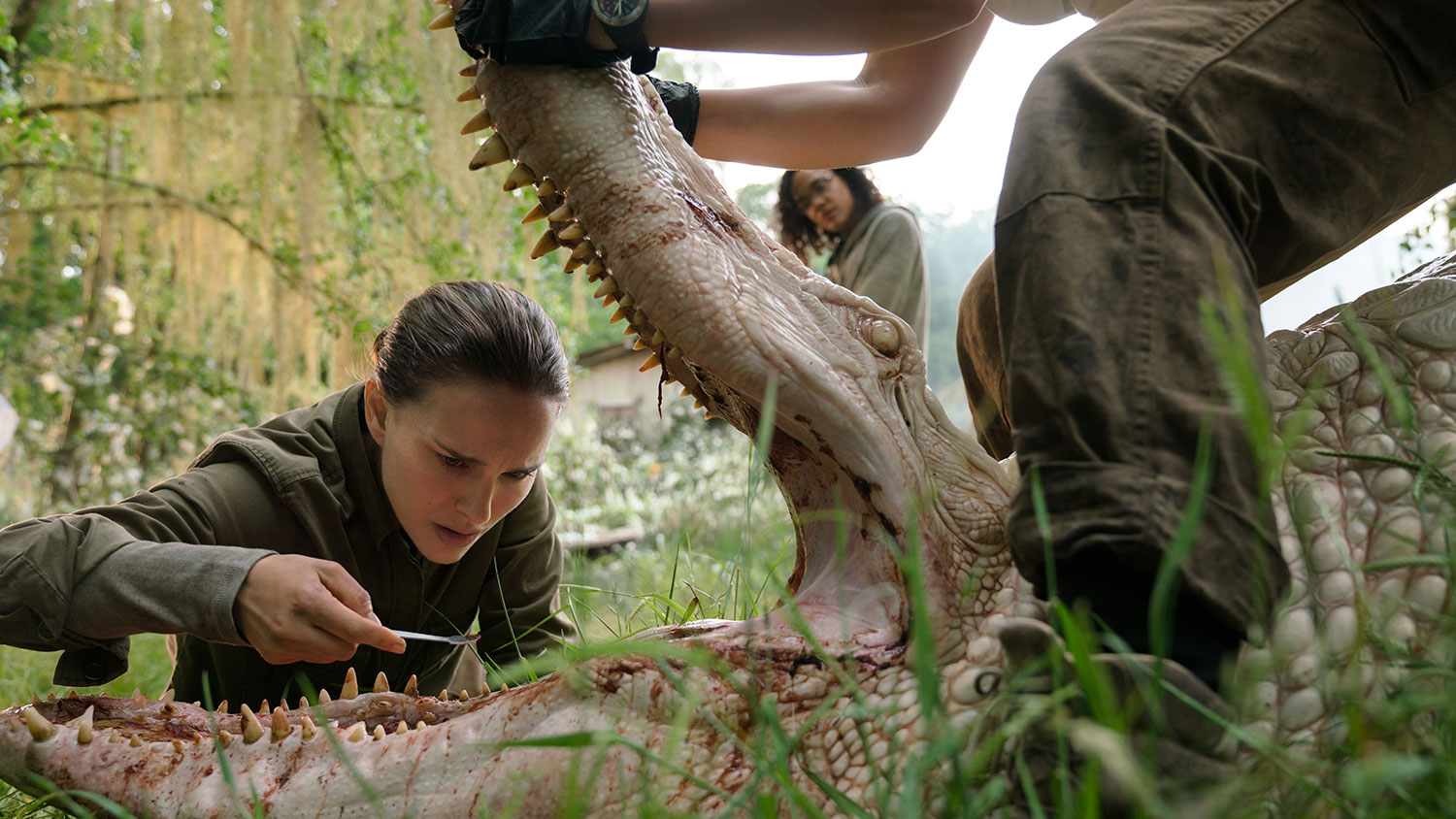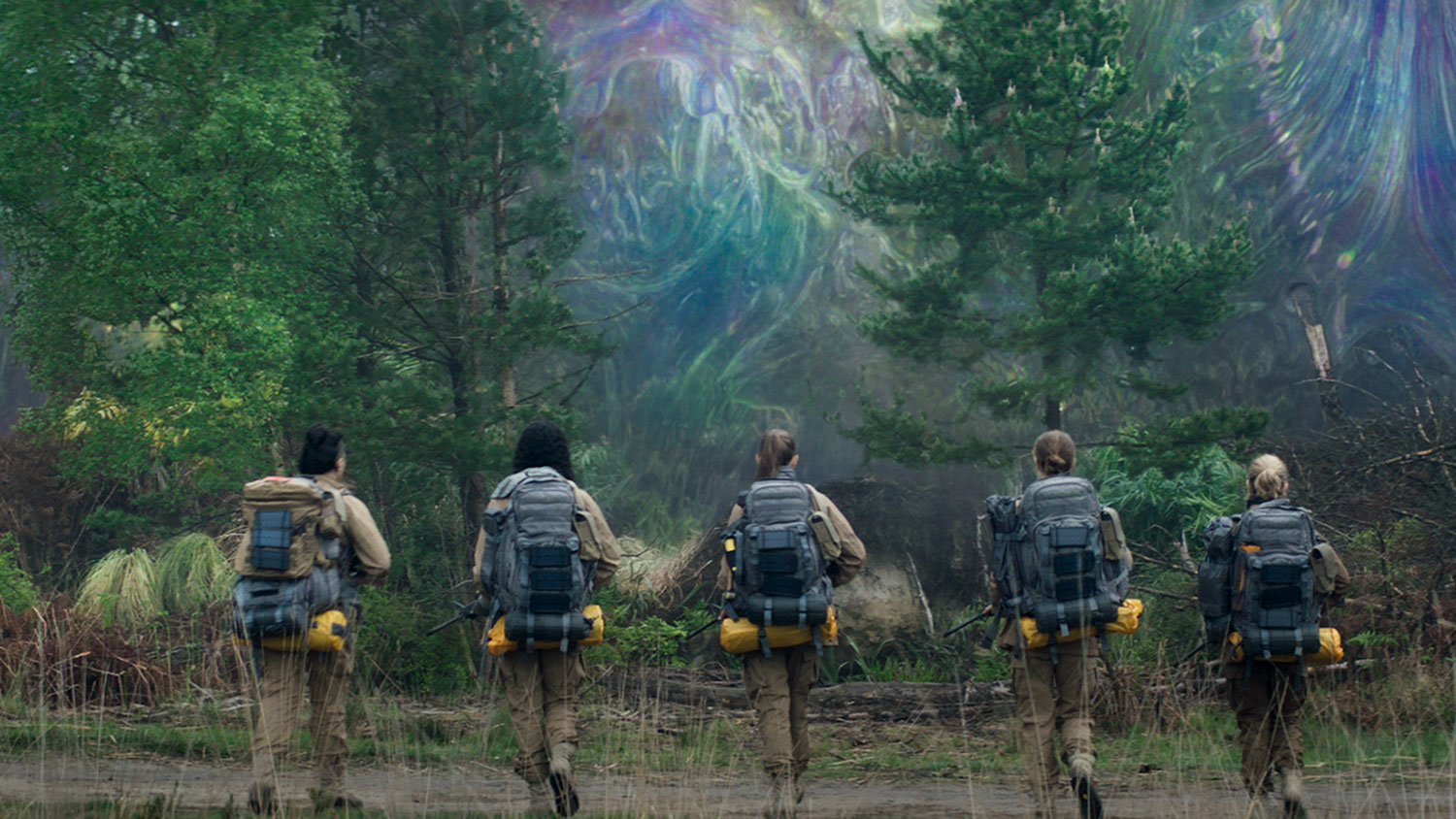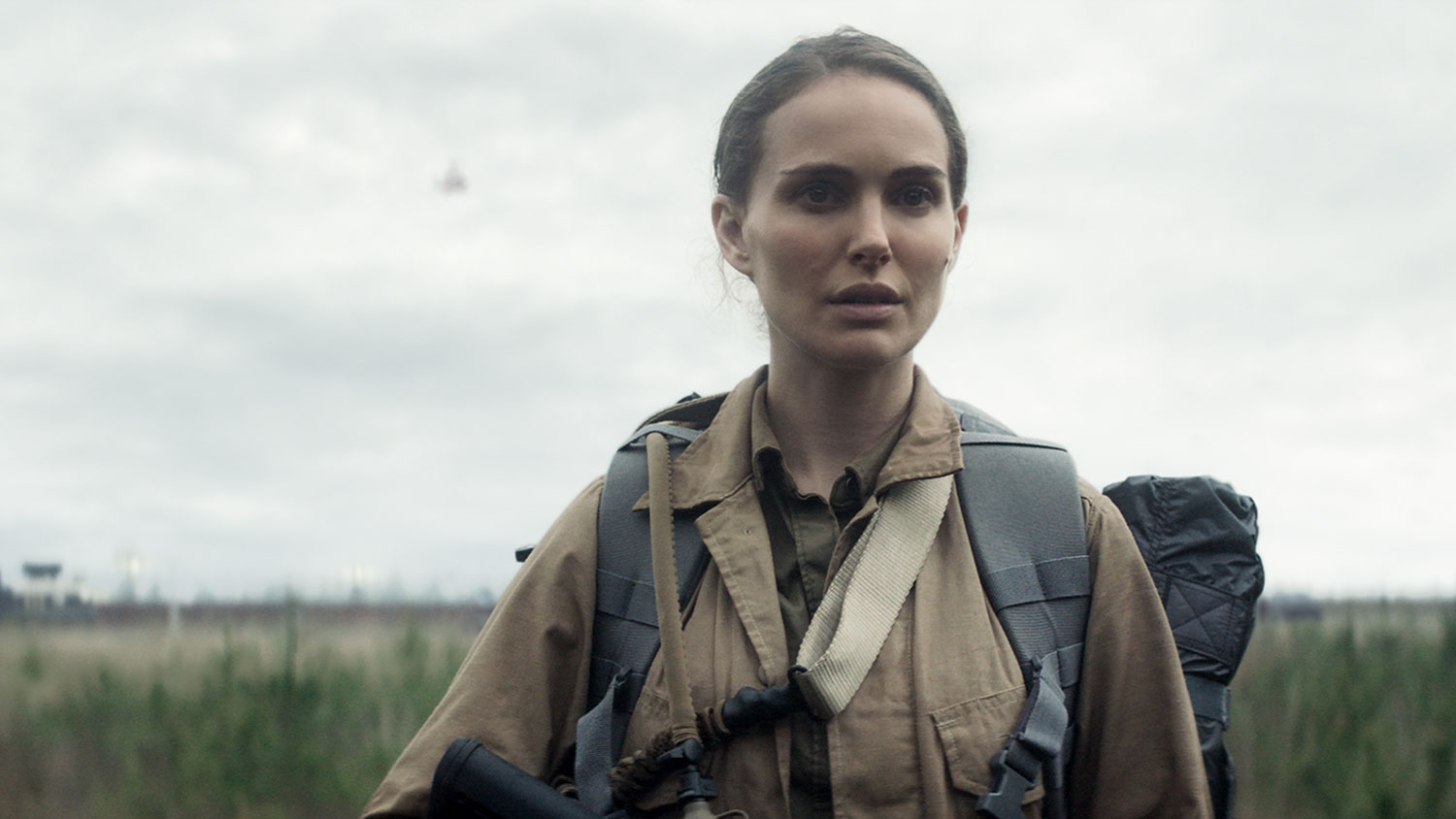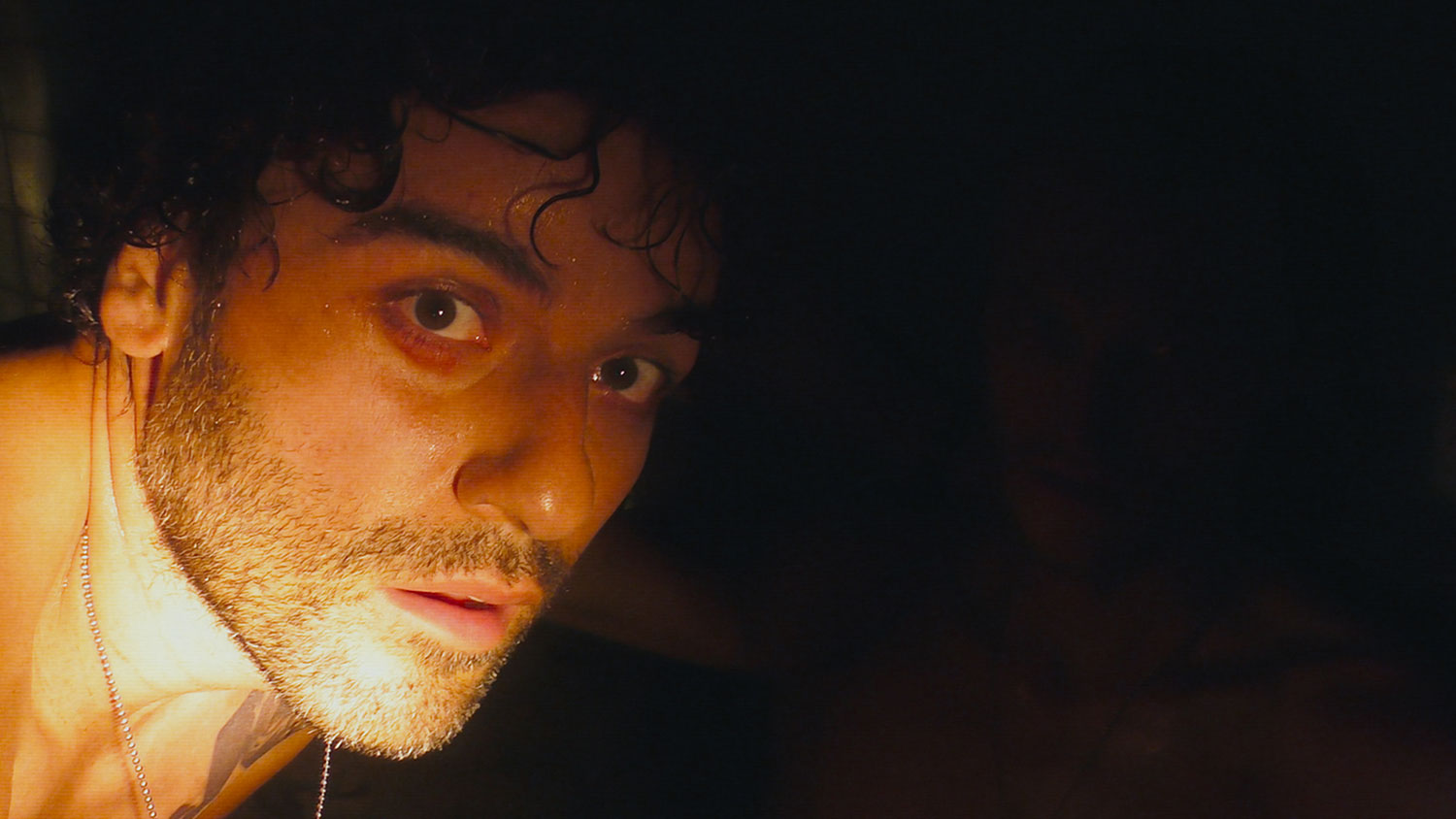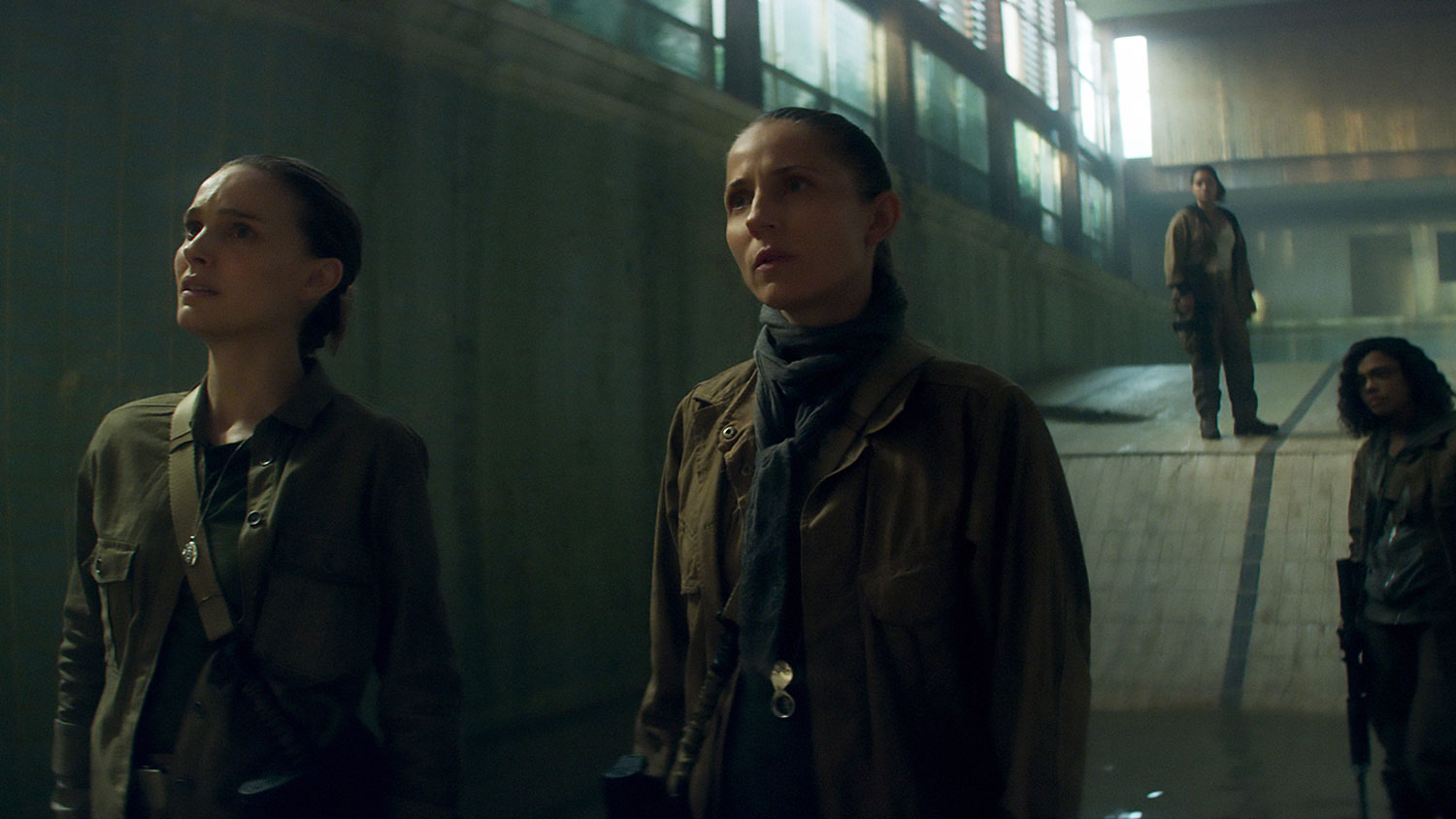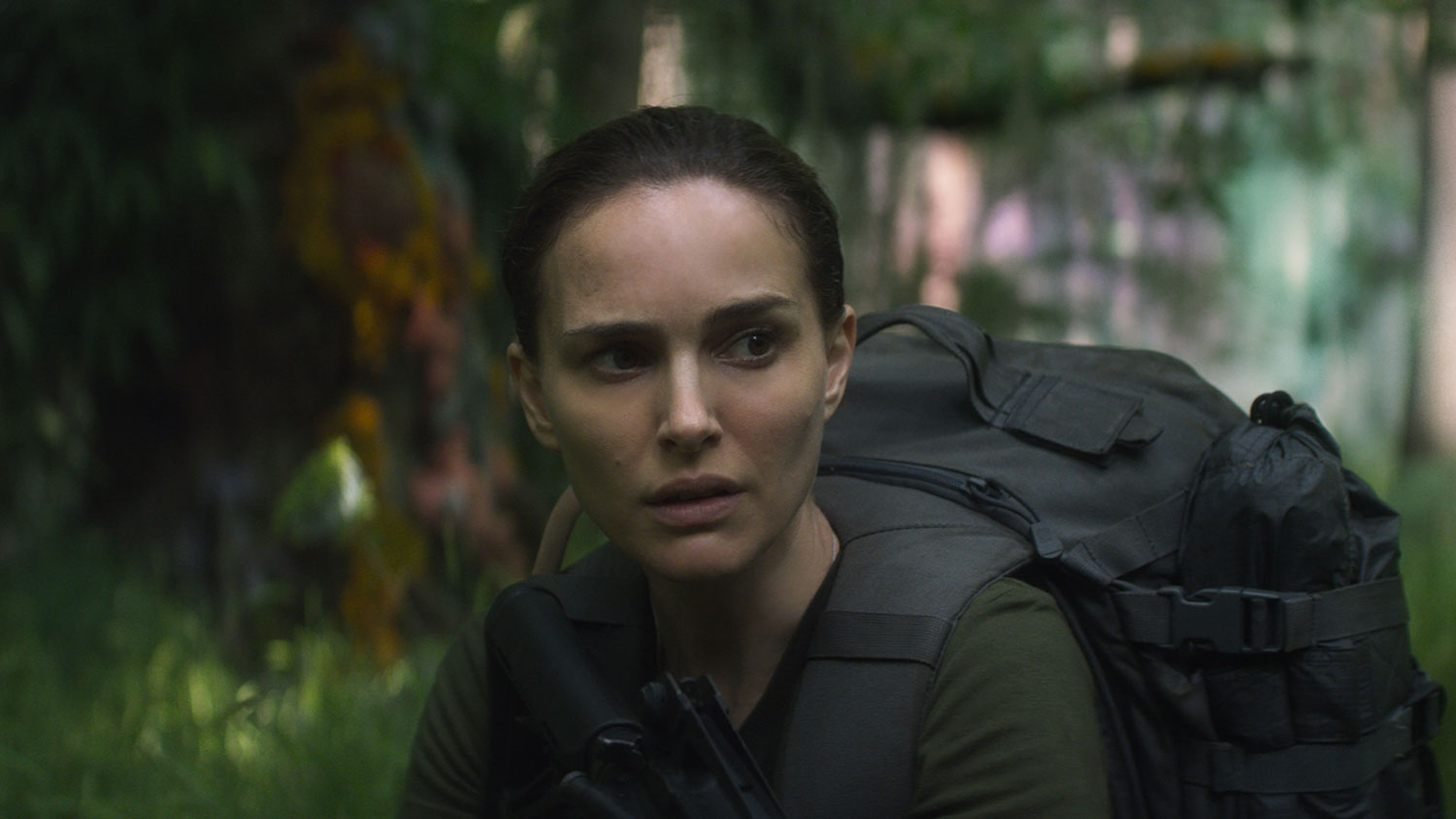Adaptations of novels typically go one of two ways: Either the filmmaker attempts to bring the story to the screen as faithfully as possible, or the adaptation forges its own path using the premise of the source material (or what the filmmaker believes to be the premise) as a starting point.
Either strategy can succeed — or fail — in the end, and it’s the quality of the final product that ultimately determines whether the film stands on its own.
Outside of a few overt creature effects, many of the scares in Annihilation are of the psychological variety.
Alex Garland’s latest film, Annihilation, follows the second of the two aforementioned adaptation formulas, peeling away layers of Jeff VanderMeer’s heady sci-fi novel of the same name and utilizing the core of the story to spin its own, unique tale. The end result is a film that offers much of the same creeping horror and disturbing uncertainty that made its source material a best-seller, but could leave audiences expecting a more straightforward story frustrated.
Directed and adapted for the screen by Garland, Annihilation follows a team of five female scientists tasked with entering a strange geographic anomaly dubbed “Area X” that has previously had multiple expeditions disappear within its shimmering border. Natalie Portman plays Lena, a biologist and former soldier who joins the latest expedition into Area X in order to find a cure for her husband (played by Ex Machina actor Oscar Isaac), whose body and memory were destroyed after being the first to leave Area X.
Portman is the headliner on the film, but the story’s expedition is led by a psychologist played by Oscar nominee Jennifer Jason Leigh (The Hateful Eight) who has her own reasons for venturing inside the mysterious region. They’re joined by characters played by Gina Rodriguez (Jane the Virgin), Tessa Thompson (Thor: Ragnarok), and Tuva Novotny (Rosemari), each with their own discipline that they bring to the expedition.
Garland’s adaptation of Annihilation is his second directorial feature after 2014’s acclaimed sci-fi drama Ex Machina, and the latest film follows a similar course in posing some deep, difficult questions and asking his audience to come along on a journey that doesn’t promise any clear answers. Fortunately, he has a knack for making the journey itself compelling enough to feel satisfying, even when its resolution is less so.
Annihilation is cut from the same heady cloth as 2001: A Space Odyssey and its ilk.
As the focal point of the film, Portman’s biologist serves as the audience’s lens into the surreal environment of Area X that is both like our world and something unnervingly different. Garland and Portman give the character significantly more depth than she had in the source material, but she remains — much like Area X — both familiar and strangely distant at times.
All of the members of the expedition are given a basic level of development in Annihilation — just enough to affirm their humanity without feeling invested in any of them individually — but Garland wisely keeps the focus on Area X. This is a strategy that worked well in VanderMeer’s novel, which refrained from even giving the characters names (they were simply referred to as “biologist,” “psychologist,” etc.), and creates a similarly eerie sense of detachment in Garland’s adaptation.
Outside of a few overt creature effects, many of the scares in Annihilation are of the psychological variety, leaning more heavily on graphic imagery and the audience’s anticipation of horror than any clearly defined threat. The terror of Area X is in the unknown, and Garland wisely keeps the balance of what is certain and uncertain heavily favoring the latter.

Although both of Garland’s films have been relatively low-budget productions, neither Ex Machina nor Annihilation have felt shortchanged in the realm of visual effects. Ex Machina took home an Oscar for its painstaking creation of the android Ava, while Annihilation delivers some potent nightmare fuel of its own with its creature effects and richly detailed set.
Garland is an expert at making every scene resonate, and Annihilation offers plenty of opportunities for him to deliver moments that stick with the audience on a deep, visceral level.
The film is at its best when it’s raising questions and exploring the next frightening mystery that Area X has to offer, but falters a bit when it diverts its focus to its human characters. Some character-based plot points seem unnecessary at best and shoehorned in at worst, but Garland wisely keeps the action outside Area X to a minimum, opting instead to take his time exploring the mysteries the unique setting has to offer.
VanderMeer’s story plays well to Garland’s strengths as a filmmaker, and both writers’ willingness to leave questions unanswered is a big part of what works for Annihilation in each of these forms. Although VanderMeer’s story spawned a pair of sequels that clarified some of the story surrounding Area X, Garland’s film offers no such promises and feels content to leave its audience pondering the mysteries at hand as the credits finally roll.
Audiences will be best served by leaving their expectations at the door.
That open-ended exploration of the film’s primary plot device feels appropriate for the story, but is likely to frustrate audiences expecting a more traditional sci-fi movie. Annihilation is cut from the same heady cloth as 2001: A Space Odyssey and its ilk (almost unapologetically so), and doesn’t shy away from letting its audience come to their own conclusions about the greater meaning behind all of the stunning, frightening imagery it offers up.
At a time when most sci-fi films hitting theaters are either sequels or superhero stories, Annihilation is a success on two fronts: It’s both an impressively unique movie and a surprisingly satisfying adaptation of a novel that seemed incapable of adaptation. Audiences will be best served by leaving their expectations at the door with Annihilation, and simply enjoying the weird, terrifying expedition into the unknown.
